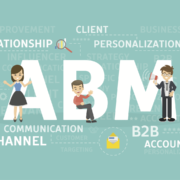
Chatbots aren’t just for Facebook, Amazon, and Apple. Innovative brands are adding artificial intelligence and natural language processing technology to their marketing mix for an excellent reason. When done well, a chatbot delivers tangible value for the brand and, moreover, an excellent buyer engagement experience for customers. An actual win-win!
Chatbot benefits for brands:
It’s time to face it….capture forms are dead. They still provide a valuable utility to brands looking to attract and retain customers but forms have their limitations. Namely, customers have developed an aversion to providing an email address to acquire information. Faced with the trade-off of growing brand awareness or supporting the sales funnel, more and more brands are deciding to un-gate their content in order to reach prospective customers at the top of the funnel.
Why Chatbots for brands:
- Accelerate Leads – Elevates important prospect communication out of the inbox and into real-time conversation allowing Marketing to respond a lead respond within minutes.
- Qualify Leads – Chatbot identifies status “Do you own one of our products already?”, customer history “What’s your email address? I can look up your account,” and interests, “Are you interested in hearing more about our fixed income solutions?”. Giving customers the power to ‘choose their own adventure’ is empowering and makes for a better user experience.
- Customer Insights – machine learning is applied to analyze what types of questions customers ask and how they ask them, leading to insights on how to drive new, future business.
Chatbot benefits for customers:
Customers want to be served and, at times, are willing to provide contact information if there is a perceived fair exchange of value (the prospective customer provides an email address and, in exchange, receives something of value, typically information). However, customers have come to loathe the multitude of emails that clog their inboxes. (Just look at how consumer email service providers like Gmail have implemented features to help users filter and unsubscribe from brand emails). Chatbots aim to serve customers in a familiar manner (text messaging) without necessarily providing an email address to gain entry. What was once a gate now becomes a friendly chat where the user is in control of the conversation.
Why Chatbots for Customers:
- Equitable Exchange – good option for site visitors who are averse to forms; not every inquiry should necessitate surrendering an email address
- Better User Experience – solves UI/CX experiences with other channels namely phone interactive voice response and difficult-to-navigate websites
- Fast – Customers get answers in real-time
Six chatbot considerations:
As you plan your chatbot buyer engagement strategy, be sure you’ve thought through these channel-specific issues:
- Goal planning – What is the best opportunity to engage your buyers and serve your customers via chatbot? What is the best use case to pilot a chatbot solution? What are appropriate KPIs?
- Narrative planning – What is the best tone of voice for your audience? Do you have skilled storytellers to craft the narrations?
- Account-Based Marketing (ABM) – How can you connect your chatbot with your ABM strategy? Can you create targeted messages for top accounts and route chat requests to the correct ABM team?
- Routing – What are the best practices you should follow? Are your chats routed to the person best available to support the buyer or customer? In some cases that means sending chats to your best salesperson and not defaulting to junior staff.
- Integration – What are your front-end channels? Are you just using your website? Are you activating social channels or SMS? Can you connect your chatbot with CRM to give your chatbot account information and make customer conversations more relevant?
- Regulatory impacts – Does your chatbot plan cover GDPR? Do you have record-keeping requirements you need to adhere to?
Chatbots are an effective strategy for modern buyer engagement and should be part of your marketing and sales strategy. As with any technology-enabled strategy, begin with an architecture and plan before deploying your solution.
Title image “The FREE HUGS robot” (CC BY 2.0) by Ben Husmann





